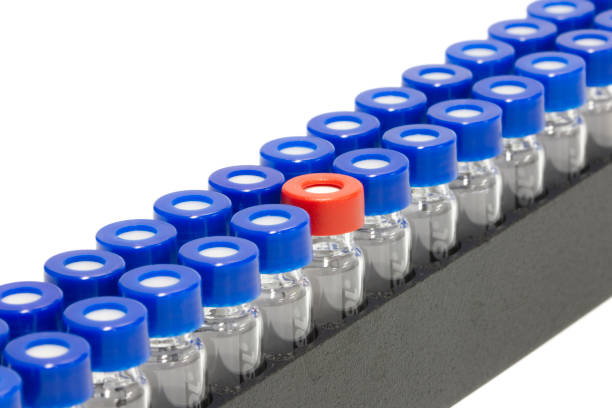
The utilization of High-Performance Liquid Chromatography (HPLC) is prevalent in laboratories for the separation, identification, and quantification of compounds within samples. Achieving success in an HPLC analysis hinges heavily on the quality of its components, and one element that often goes unnoticed but is undeniably crucial is the HPLC vial. Here, we will explore the diverse realm of HPLC vials, offering valuable insights to assist you in choosing the most appropriate option for your distinct needs. See, this website has all the info you need to learn about this amazing product.
Glass vs. Plastic: Understanding the Basics
Your initial decision involves choosing between glass and plastic for your HPLC vials. Every material comes with its set of pros and cons. Being inert, glass vials don’t react with the sample, preserving the integrity of your results. On the other hand, plastic vials are lightweight, shatter-resistant, and can be more cost-effective. Your choice depends on your specific application, sample type, and budget. If the topic is still not clear to you about HPLC vials, learn more here.
Glass HPLC Vials: An Overview of Types and Features
When it comes to glass HPLC vials, there are two main types to consider: borosilicate and soda-lime glass. Borosilicate glass is known for its superior resistance to chemical corrosion, making it suitable for samples containing aggressive solvents. While soda-lime glass is more economical, it may lack the same chemical resistance. You can read more on the subject here!
An additional crucial factor to contemplate is the surface treatment of the vial. Some glass vials are coated to reduce adsorption of analytes onto the glass surface, preventing potential interference with your results. In cases where your samples are sensitive or prone to adsorption, opting for a vial with a suitable surface treatment can notably improve the accuracy of your analysis.
Plastic HPLC Vials: Exploring Types and Considerations
Plastic HPLC vials are commonly made from polymers such as polypropylene or polymethylpentene. The popularity of polypropylene stems from its chemical resistance and low extractable levels. Nevertheless, it’s imperative to recognize that plastic vials pose a heightened risk of interacting with certain solvents or analytes, emphasizing the need for meticulous consideration of your sample composition. A notable advantage of plastic vials lies in their flexibility, decreasing the likelihood of breakage during transportation or handling. Moreover, plastic vials tend to be more cost-effective, making them an appealing choice for routine analyses where the paramount concern isn’t the highest level of chemical resistance.
Choosing the Ideal Vial Size and Ensuring Compatibility
Sizes of HPLC vials vary, commonly falling within the range of 1.5 mL to 4 mL. The choice of vial size depends on the volume of your sample and the instrument specifications. Ensuring compatibility with your HPLC system is crucial, as not all vials are suitable for every autosampler. Consult your instrument’s manual or specifications to determine the appropriate vial size and compatibility. This page has all the info you need.
Navigating Cap Options: Securing Your Analysis
Choosing the right cap for your HPLC vial is just as important as selecting the vial itself. The role of caps is pivotal in preventing both sample contamination and evaporation. Polyethylene, polypropylene, and PTFE stand as common cap materials. Polyethylene and polypropylene caps are suitable for routine analyses, while PTFE caps provide excellent chemical resistance for more demanding applications. Factor in the sealing mechanism of the cap, whether it’s a screw cap or a crimp cap. Screw caps, known for their convenience and user-friendly nature, are suitable for routine analyses. Crimp caps, on the other hand, provide a more secure seal, which is essential for preventing evaporation and contamination in sensitive analyses. For more information about HPLC vials, view here.
Specialized Vials for Specific Applications
In some cases, standard HPLC vials may not be sufficient for your unique application. Specialized vials, equipped with features like pre-slit septa, pre-silanized surfaces, or amber-colored glass for light-sensitive samples, are accessible. Exploring these specialized options becomes worthwhile when your analysis demands specific conditions to guarantee the accuracy and reliability of your results.
Wrapping Up: Choosing Wisely for Your HPLC Analysis Choosing the appropriate HPLC vial is a pivotal stride towards guaranteeing the triumph of your chromatographic analysis. Whether you opt for glass or plastic, consider the chemical compatibility, vial size, and cap options to meet the specific requirements of your samples and instrument.
Leave a comment